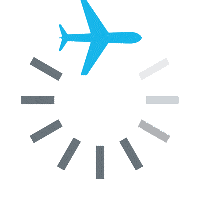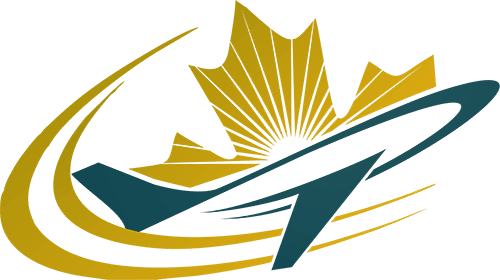Private Pilot License Canada Timeline
If you’re interested in pilot training or just started pursuing a private pilot license in Canada, you’ve come to the right spot. Let’s walk through a training timeline to keep you on track during your training. Let’s look at how to train to be a pilot.
Ground School
A minimum of 45 hours of ground school must be completed. The ground school can be done in person or online, like with our online ground school. The benefit to learning online with us is that you can participate in our expertly designed curriculum from the comfort of your own home. Our online ground school teaches all aspects of pilot training to ensure you are ready for your exams and in-person flight training.

Flight Training
A minimum of 45 hours must be obtained. Of these hours, a minimum of 17 hours must be Dual, which must include 3 hours of cross country time and 5 hours of Instrument time. A minimum of 12 hours must be Solo, which must include 5 hours of cross country time. During this time you will gain extensive experience in all aspects of aircraft handling, emergency procedures, radio procedures, navigation and basic instrument handling.

Private Pilot License Timeline
The Foundation
In the beginning of your pilot training all flights will be completed as Dual, with a flight instructor. The first 5 hours are spent learning the basics of flying which includes attitudes & movements, straight & level flight, climbing & descending, & turns.
During this time of your training you should also be scheduling a Transport Canada Aviation Medical. Here, you can find a certified aviation medical examiner near you. You should also be studying for the Industry Canada radio operator certificate – Aeroplane.
Pre-Solo
Once you have a good handle of the basics you will spend the next 8-10 hours of your pilot training dual refining your skills by practicing upper air work and recovering from air work maneuvers. These lessons will include range & endurance, slow flight, power-off & power-on stalls, spins, spiral dives and slipping.
During this stage of the training you should be studying for the PSTAR exam.
Circuits
Once you are proficient in all the upper air work exercises you will begin preparing for your first solo. This time is spent practicing take-offs, circuits and landings. You will also be learning crosswind technique, how to depart and rejoin the circuit and emergencies such as rejected take-off and engine failure in the circuit.
First Solo
At this stage in your pilot training, around the 15-25 hour mark you should be close to your first solo. Don’t get caught up with the paper work! Prior to first solo you will have received your medical from Transport Canada, passed the PSTAR and ROC-A exams. If all are completed and your flying meets the standard, Congratulations!
Once solo you will continue to spend time in the circuit building up to 3 solo hours. Then, you will learn specialty take-offs and landings. The soft field and short field technique. As a beak from the circuit the student will also be taught steep turns and illusions created by drift if windy conditions exist.
Practice Area Checkout
Now, with some solo time under your belt you are ready to tackle the next step of your pilot training, practice area solo. This will generally consist of multiple dual flights having the student navigate to and from the practice area and learning the forced approach, precautionary approach and emergency procedure lessons. all previous air work will be reviewed making sure it is safe for solo. The student will then complete 3-5 hours solo in the practice area improving these exercises.

Navigation & Instrument time
Once the Private Pilot License student has completed a solo air work review, the student is on track if they have around 30 hours dual and 10-15 hours solo. Now the navigation exercises will be taught starting with diversions and then the departure and en-route procedure during a short cross country. A short solo cross country will follow to build solo cross country time. Next will be the 150NM cross country flight to meet Transport Canada requirement.
We still have 5 hours of dual instrument time that must be completed, this time is often sprinkled into the training on bad weather days waiting for the cross country flight.
Flight Test Practice
The final step of your training is to pre-pare for the flight test. This will include the necessary dual and solo time to be proficient enough to meet the Private Pilot License standard specified in the Transport Canada PPL flight test guide.
The average student goes into the flight test with about 45 hours dual and 20 hours solo.
This is a fairly typical PPL time line. It will vary slightly from each instructor and each flight school. It is important to not focus on your time and where you are. You should focus on your weakness and how to improve them. I have seen pilots solo at 15 hours and 40 hours but at the end of the day they are both private pilots.
We recommend using our online pilot training ground school or buying the Flight Test Notes to help with this stage.
Private Pilot License Canada – Advantages and PPL Privileges
- Fly solo at 14
- Fly single engine aircraft
- Fly anywhere in Canada and can fly into the United States
- Carry more than one passengers
- Obtain additional ratings and licenses, such as multi rating, night rating, and IFR rating.
Discover more from Canadian Flight Trainers
Subscribe to get the latest posts sent to your email.


